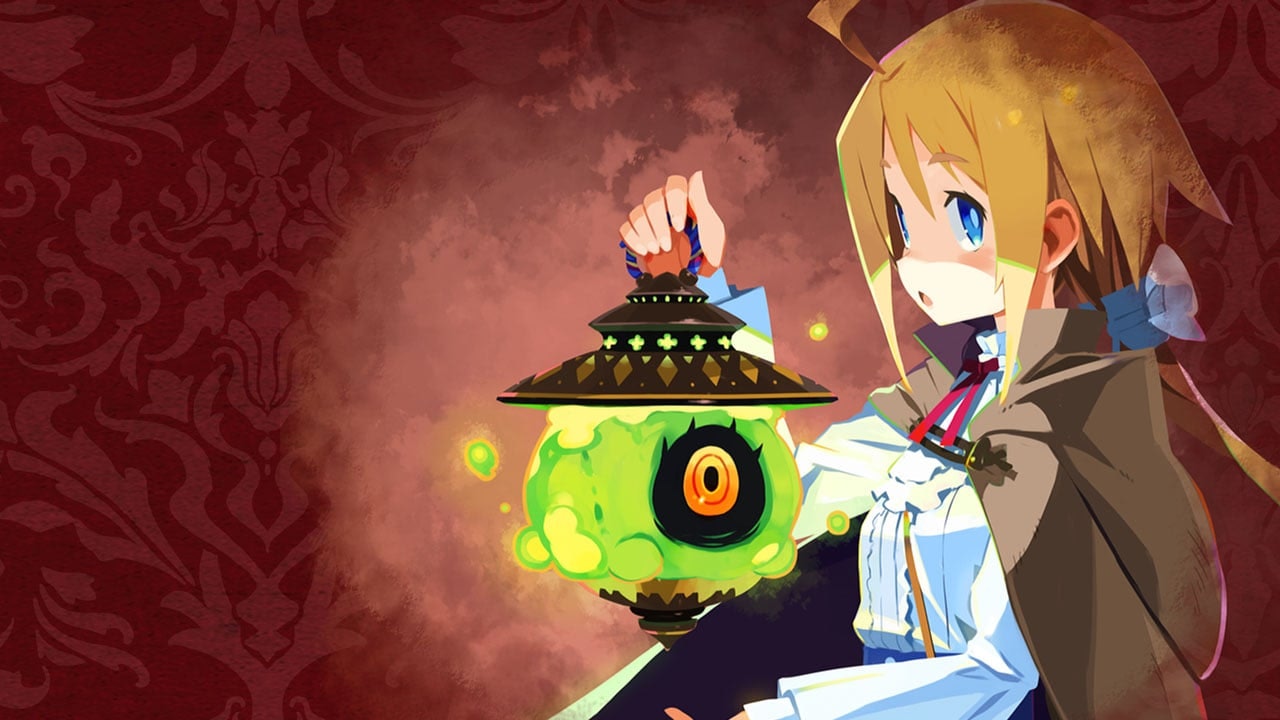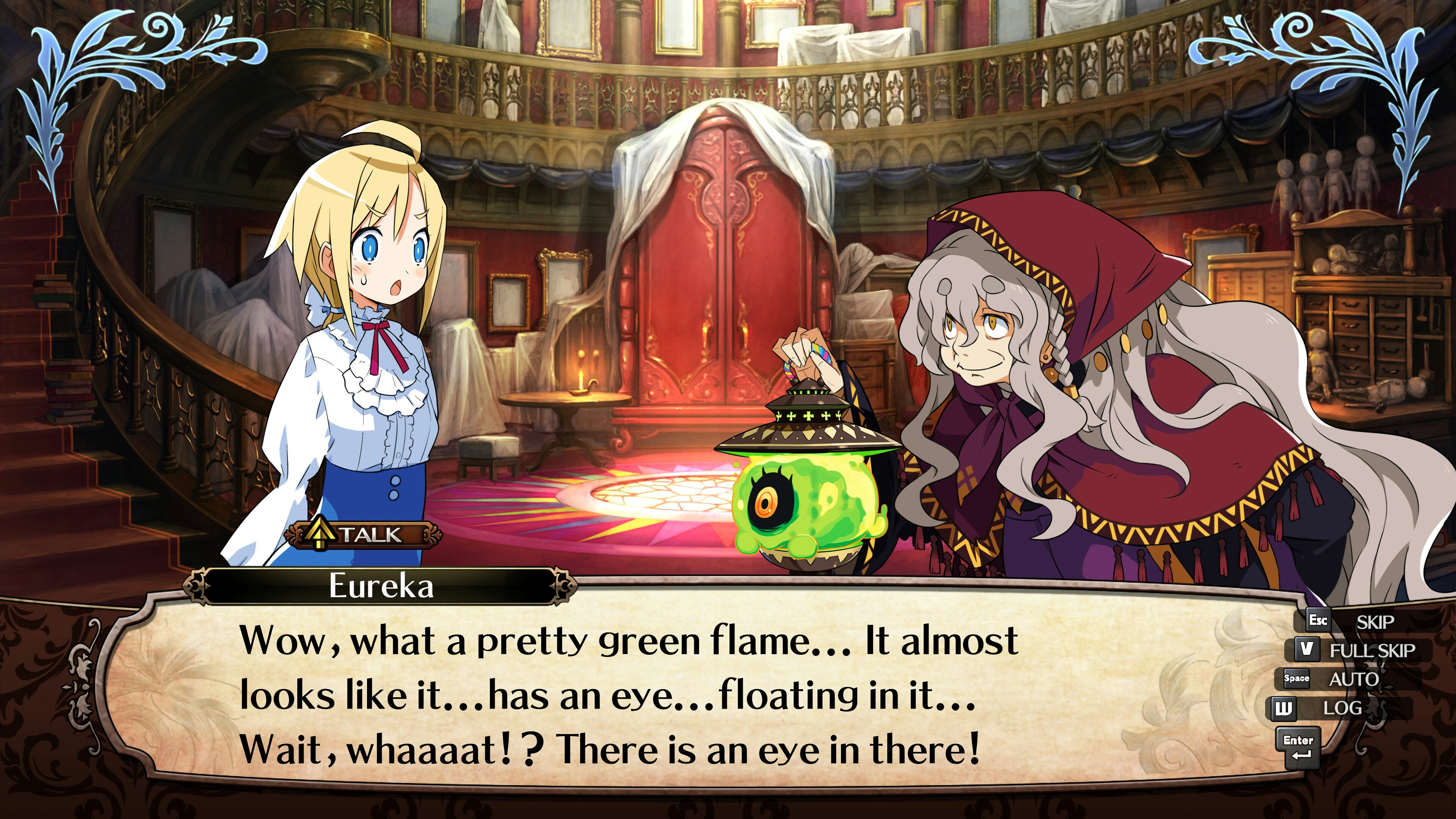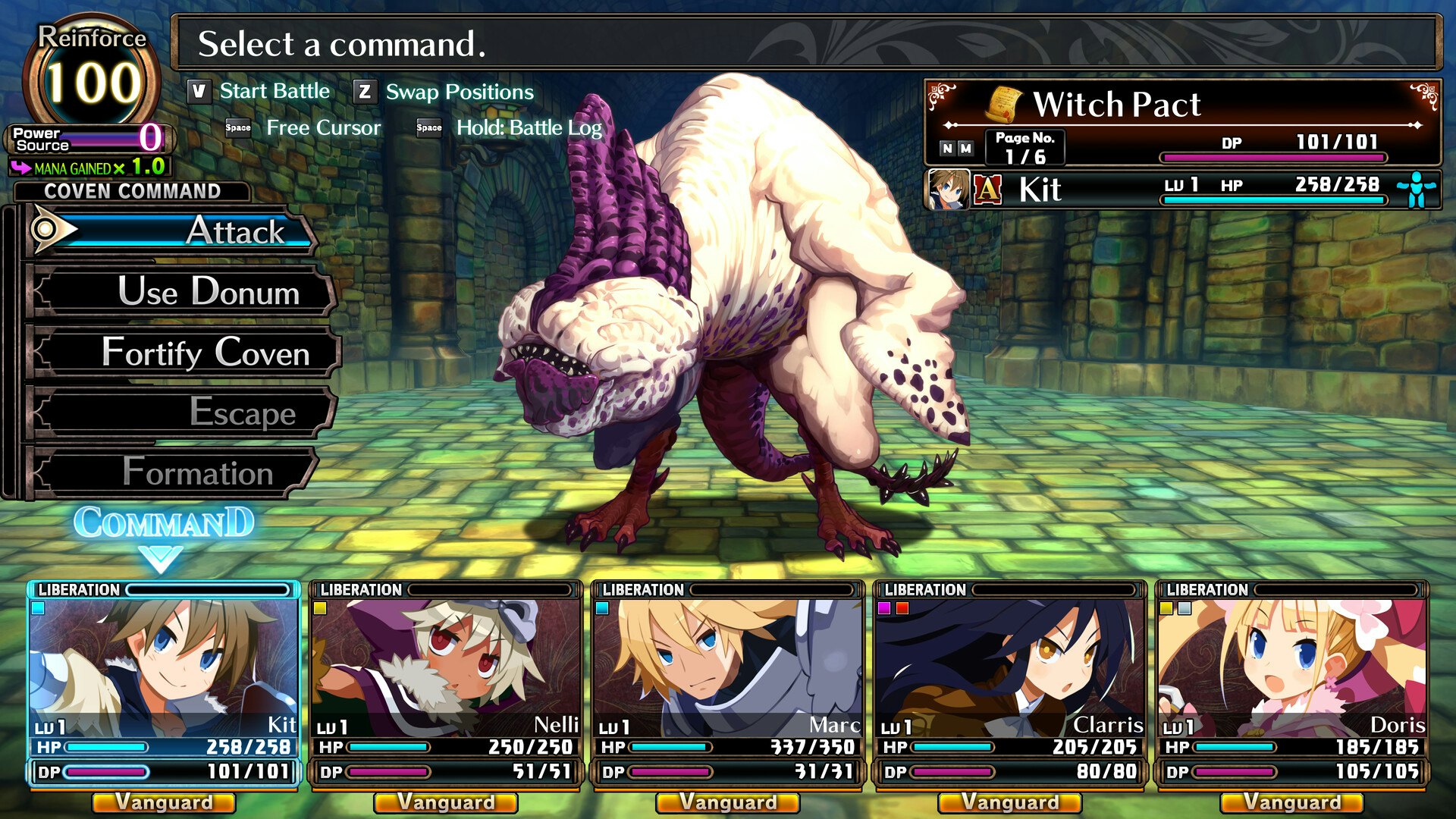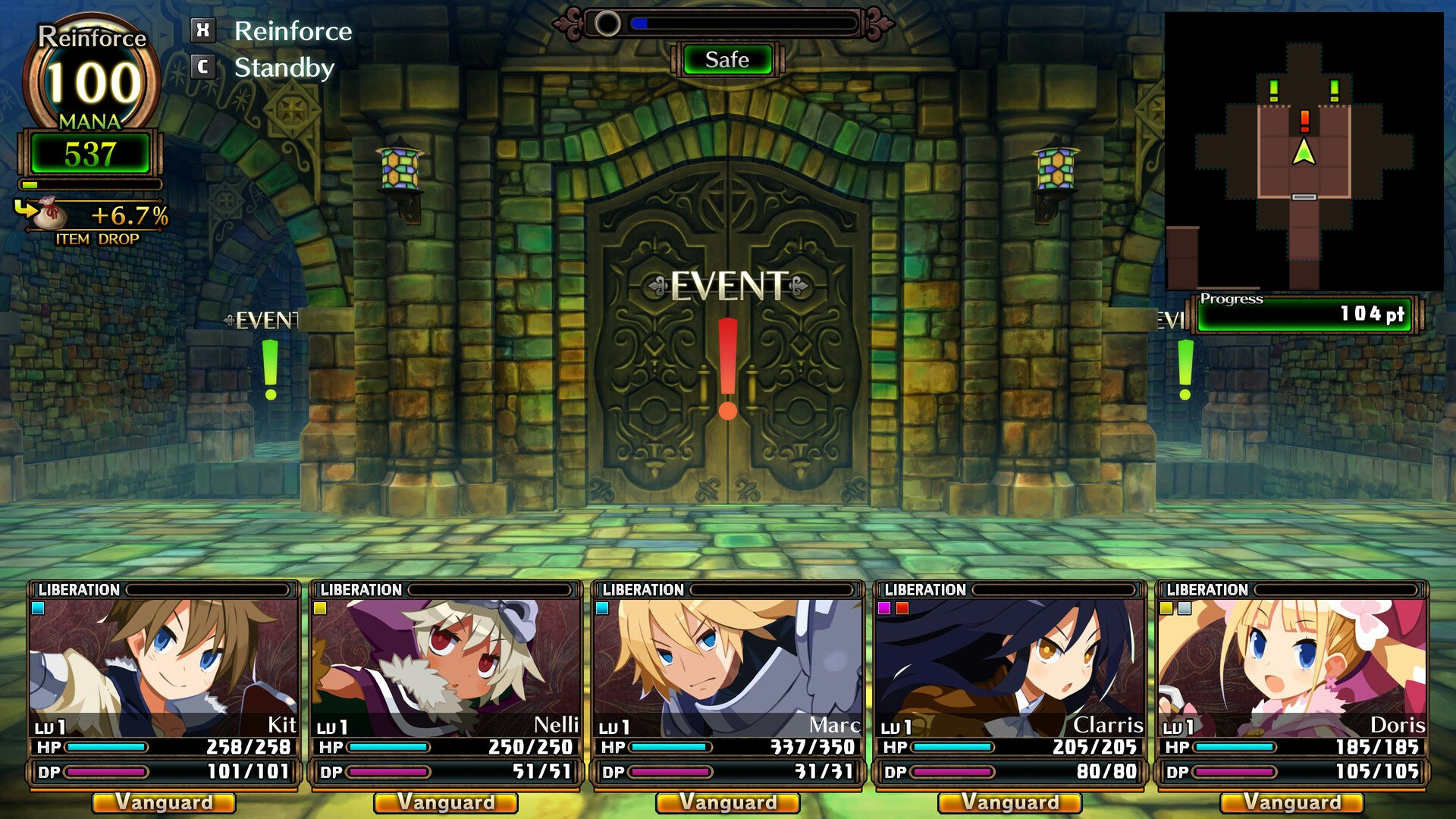
Labyrinth of Galleria: The Moon Society is a game that feels like it may never end.
Even after rolling credits 50 hours into the experience, it asks you to start over. But instead of dumping you into a traditional New Game Plus, a completely new storyline emerges with brand-new characters and even more complex mechanics that fundamentally change how you navigate dungeons and take down the monsters inside.
Occasionally overwhelming and almost always compelling, Labyrinth of Galleria winds up being one of the most robust dungeon-crawling RPGs ever — so long as you can handle its intense runtime.
A Magical House
Labyrinth of Galleria is a first-person dungeon-crawling RPG that uses a visual novel style to play out its story cutscenes. It’s a relatively lighthearted fantasy adventure due to the protagonist’s upbeat nature, but some of the endings can be quite grim. The game primarily follows Eureka, an enigmatic young woman who comes to Galleria Manor to answer a job listing looking for an apprentice to the master witch Madame Marta. Eureka then explores the labyrinth underneath the manor alongside a magical lantern named Fantie whose looking for special items called Curio d’arts.
These items contain powerful abilities that can grant users special skills such as hyper-intelligence. With thieves, treasure hunters, and royal investigators roaming around trying to nab the Curio d’art artifacts, it’s up to Eureka and Fantie to gather them all before they end up in the wrong hands. Additionally, with each Curio d’art found, a man named Count Bismont provides valuable payment for Galleria manor’s inhabitants.

The game’s cast of characters is colorful and bursting with personality. Eureka’s upbeat demeanor contrasts well with another girl in the manor named Nachi, an aspiring witch and a laid-back tomboy who is constantly annoyed by Eureka’s lightheartedness. Their banter makes for entertaining conversations. Madame Marta’s archetypal “grouchy grandma” role is also played for laughs too, especially whenever she has disagreements with Eureka or Nachi.
Fantastic voice acting really helps bring the characters to life as well, and you can opt for Japanese or English voiceovers. English voice actors do a great job portraying their characters, from Eureka’s high-pitched enthusiasm to Nachi’s emo-laden complaints.
Labyrinth of Galleria’s overall aesthetic emphasizes a clean anime art style with a diverse color palette that mixes bright and dark tones. While the visual novel cutscenes feature static 2D portraits of characters, there are plenty of variations that help convey the emotions. The jazzy soundtrack that plays while dungeon-crawling is also an offbeat delight, as are the ominous piano ballads that play during boss battles to help set a more foreboding mood.
Treasure Hunting
While exploring the labyrinth, you create puppets to fight for you in turn-based battles from a first-person perspective against various unique-looking monsters, such as giant cats covered in kingly robes or huge heads reminiscent of Greek statues. Customization options also abound: You can pick innate class abilities to learn certain skills, and even make customize choices about stat growth. It’s a real treat for players who like to optimize their characters and overall party composition. There’s a lot of tinkering and micromanagement involved to make sure that you have the characters that fit your playstyle the best.
The exploration is well-paced in the labyrinth. There are so many different kinds of floors with a variety of obstacles to overcome, such as jumping over spears, holding your breath underwater, or going through sections that slowly make your puppets go mad. Every time Fantie finds a Curio d’art, you learn more about Eureka’s background and why the Curio d’arts are so revered in the first place.

These artifacts play a major part in the rather dark twist you’ll see in the game’s first ending. You’ll also progressively earn more abilities to help you explore the labyrinth. You’ll eventually be able to high jump over those spears and hold your breath longer for longer than one second underwater.
After spending hours painstakingly combing through every single corner of a specific floor for the Curio d’art, you truly feel as if you’ve earned every upgrade. That said, the game could use a more specific direction toward your current objective. In some cases, it may take hours to find a single Curio d’art, mainly because the objective might have only vague instructions like, “continue exploring!”
Despite the frustrations with the treasure hunt, it also leads you to discover other fun surprises, like that time I found a completely new portion of the floor that I had somehow missed the first time around. Every aspect of the dungeon crawling and combat feels so well-paced that you don’t really notice as the hours just fly by when playing the game.
An Increasingly Rare Gem
Labyrinth of Galleria takes an unconventional approach to storytelling structure reminiscent of Yoko Taro games like Nier: Automata but even longer.
The first 40-50 hours function as “Route A” and the “New Game Plus” twist is ostensibly the game’s “Route B.” However, instead of telling the same story with slightly different perspectives, the second playthrough is completely different and makes the first playthrough feel like an extended tutorial.

The second playthrough unlocks a vast array of new customization options, such as new weapon types or rebirthing characters into new classes and carrying over stats. It can be overwhelming with all of these choices, especially as the game’s many tutorials explaining battle mechanics may not always be clear. However, experimenting is important, and through the process of trial and error, exploring the labyrinth becomes smoother.
First-person dungeon-crawling JRPGs are a rarity these days, with only a few notable games like Atlus’s Etrian Odyssey or Idea Factory’s Mary Skelter franchises, as well as Labyrinth of Galleria’s 2018 prequel, Labyrinth of Refrain: Coven of Dusk.
As such, it’s refreshing to see how much care was put into the development and localization of Labyrinth of Galleria: The Moon Society. It’s in a niche genre, but the game has a staggering amount of content that’ll keep its players entertained for hours on end. Despite the immense potential runtime, the game's progression and overall pacing always feel just right. And between the charming art style and characters, you'll never get bored.
8/10
Labyrinth of Galleria: The Moon Society launches on February 14 for PC, PS4, PS5, and Nintendo Switch. Inverse reviewed the game on PS5.
INVERSE VIDEO GAME REVIEW ETHOS: Every Inverse video game review answers two questions: Is this game worth your time? Are you getting what you pay for? We have no tolerance for endless fetch quests, clunky mechanics, or bugs that dilute the experience. We care deeply about a game’s design, world-building, character arcs, and storytelling. Inverse will never punch down, but we aren’t afraid to punch up. We love magic and science-fiction in equal measure, and as much as we love experiencing rich stories and worlds through games, we won’t ignore the real-world context in which those games are made.







